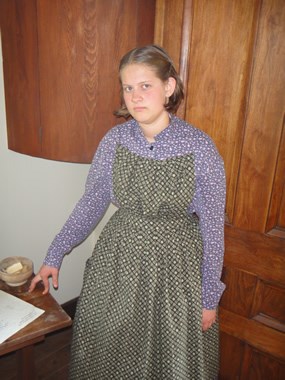
A Laundress' Tools:

Laundress Outfit
Some of the definitions on this page are based on information found in Laundry and Cleaning Practices of the Mid-Nineteenth Century by Virginia Mescher, published by Nature's Finest, 1994. Used by permission. Experience more Life on the FrontierBack to Virtual Resource Center Home |
Last updated: June 3, 2022
